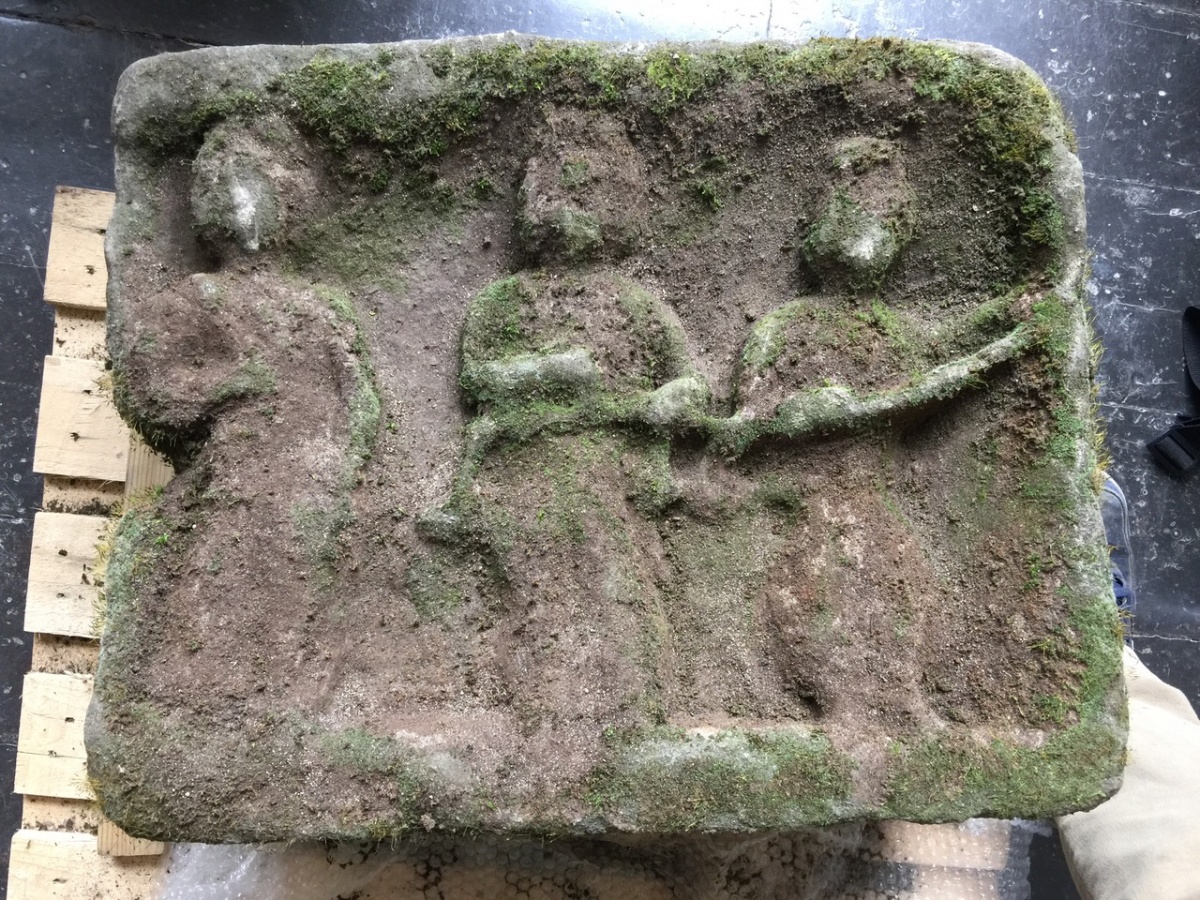Conserving 'the three ancient goddesses of fate, the Parcae '
Mar 12, 2018
We recently conserved this remarkable sculpted block, found in Calne, Wiltshire that may have come from a substantial and important Roman funerary monument.
It was identified by The Reverend Professor Martin Henig as depicting the three ancient goddesses of fate, the Parcae, a subject thought unique in Roman Britain and rare in Northern Europe.
When found, the face was covered in organic matter, which had been damaging the stone. By a variety of gentle means we slowly removed the moss and algae - the roots of which were tenacious and not easy to deal with. The stone substrate was quite friable in places, so the removal of too much organic material would be detrimental to the surface.
It is now on display in the Roman Gallery of Wiltshire museum. The moss removal revealed a series of drilled holes along the topmost margin where there is also the faint suggestion of a inscription.
The stone has been recorded by Tony Hack to bring out the detail in the carving and possible inscription and to further allow the interpretation of the figures shown on the stone. Some of this work in 3D is available to view here.

We wondered (incorrectly) if the figure on the left was Hercules. There may have been faded inscription along the top margin but the only letters we could make out for certain were an ‘I' and a ‘V’ slightly to the left of the central figure. The margin had been drilled at regular intervals all the way round and one of the drill holes has a small nail or what may be a broken drill bit in it. There is a small amount of lime mortar on the right cheek that suggests that it was once fixed to a neighbouring stone.
During a gathering to discuss the piece, The Reverend Professor Martin Henig concluded that the block displayed three standing female deities, mother goddesses known as the Fates, or the Parcae. Their individual names are (left to right:) Lachesis who measured the thread of life, seen with her measure over her shoulder, Klotho, who span the thread of life on her spindle, but here carries scales and holding a scroll, Atropos who cut life's thread and chose the way a person would die. The thick thread can be clearly seen to be held by the right hand figures.The Parcae controlled the metaphorical thread of life of every mortal and immortal from birth to death. Even the gods feared the Parcae. Jupiter also was subject to their power.


Above Photo courtesy of Mr Tony Hack.


The Reverend Professor Martin Henig commences the conservation of the block.